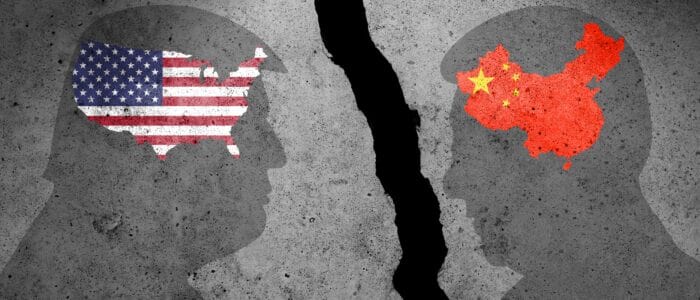Published
‘Appetite for Friction’ – Trump Policy Towards China
By: Frank Lavin Natalia Macyra
Subjects: Far-East North-America

According to Frank Lavin, former US Under Secretary of Commerce for International Trade, ‘trade negotiations should focus on managing what’s good rather than managing what’s bad’. However, US President Donald Trump is doing largely the opposite and focusing on grievances rather than opportunities when dealing with trade partners. During a seminar held in Brussels on June 14, 2019, Lavin highlighted two significant circumstances that have changed in recent years and have led to the situation we face today.
First, the US approach to trade policy has shifted from rationalism towards nationalism. Donald Trump embraces his ‘Make America Great Again’ slogan and devotes his efforts to correcting the problems he perceives in current trade agreements. He wants to please his electorate by pursuing a protectionist policy.
The real trade war began 30 years ago, and we lost. This is a bright new Age, the Age of Enlightenment. We don’t lose anymore! https://t.co/5ECmBpsI6D
— Donald J. Trump (@realDonaldTrump) May 25, 2019
Moreover, President Trump’s aggressive posture and public demands for change are not a standard modus operandi for the American administration. Trump seems to thrive on friction and is not afraid to characterize trade liberalization as detrimental to the U.S. economy. Instead of pursuing trade initiatives with like-minded partners he solely focuses on managing what, in his view, is hurting American workers and economy. Despite data, reports, and real-life examples are showing that it is the American people who will eventually pay for this trade war. Besides, his hostile tone and threats of new tariffs are only making it more difficult to resolve the imbalances that he criticizes.
I say openly to President Xi & all of my many friends in China that China will be hurt very badly if you don’t make a deal because companies will be forced to leave China for other countries. Too expensive to buy in China. You had a great deal, almost completed, & you backed out!
— Donald J. Trump (@realDonaldTrump) May 13, 2019
Secondly, China is now playing a much greater economic role than it previously did. Today the Chinese economy is the second largest in the world, and by 2023 China’s GDP will be about 82% of the US GDP[1]. Hence, all the internal ‘imperfections’ and unfair trade practices have become much more apparent.
Lavin also pointed to the fact that economic growth in China has outpaced the reforms. Policies are not keeping up with market development, which leads to a significant gap in addressing trade partners’ concerns. Chinese internal situation is also very much different than when the liberalization of its economy started. Xi Jinping does not have the critical need for reform that Deng Xiaoping faced. He serves more of a caretaker of a successful economy rather than a reformer. There is little sense of urgency to correct market imperfections. However, Lavin also believes that there are clearly areas where China can make some concessions.
Given these two factors, is there then a way for both parties to come back with their shield? According to Lavin ‘China is an outlier in many aspects of trade and then have the ability to move toward global norms in market access, IP protection, and compulsory licensing’. But it requires patience and an effort to maintain dignity on both sides. After all, both the US and China will each have to present a win to their domestic front. This will require time as both sides wait for the political dust to settle. Only after the public criticisms have stopped can negotiations enter a more substantive phase. Although it might not bear immediate fruit, in a longer-term perspective it gives partners a way to move towards consensus.
When the time is right we will make a deal with China. My respect and friendship with President Xi is unlimited but, as I have told him many times before, this must be a great deal for the United States or it just doesn’t make any sense. We have to be allowed to make up some…..
— Donald J. Trump (@realDonaldTrump) May 14, 2019
It is also interesting to put the current standstill in the US-China negotiations in more geopolitical perspective where we can see two important events. First, China is still looking for its role in the global economic arena. Second, the US has withdrawn from its leadership position in this aspect. As a result, we have a vacuum in the global leadership on trade liberalization – so far neither the European Union nor Japan picked up the baton. Although the WTO architecture is there to maintain the system, there is not enough appetite to progress further. There is also a populist push back against free trade, open markets and globalisation. Therefore, supporters of trade should allocate their efforts toward initiatives where there a convergence of interests and progress can be reached.
[1] World Economic Outlook. (2019, April). Retrieved June 19, 2019, from https://www.imf.org/external/datamapper/NGDPD@WEO/CHN/USA
Listen to a podcast episode with Frank Lavin: What is Trump’s trade strategy for China and Europe?
Watch an interview with Frank Lavin on the US-China relations.